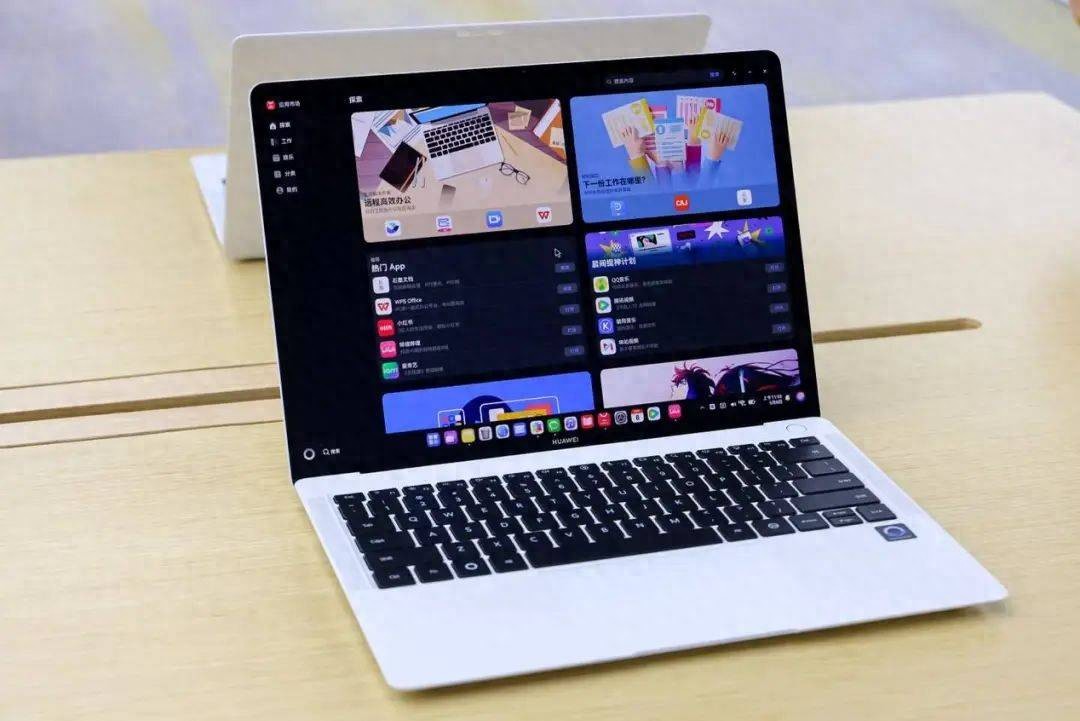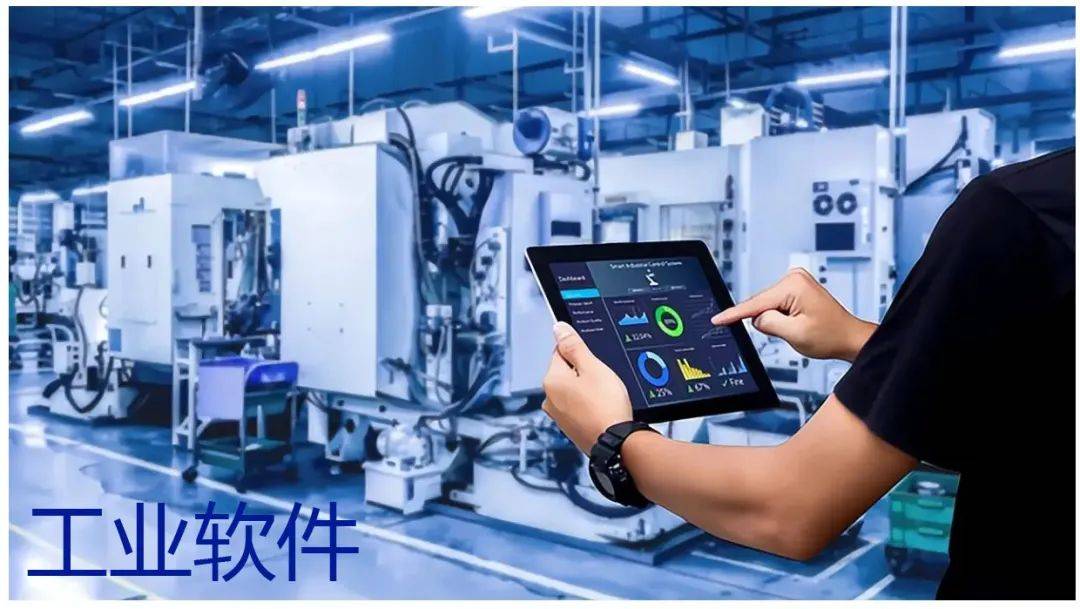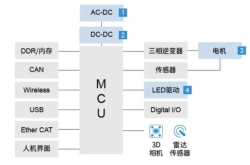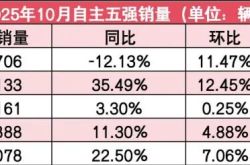Hongmeng PC's Ecological Path: Navigating Challenges Beyond Smartphones
![]() 05/20 2025
05/20 2025
![]() 512
512

The application ecosystem of PCs, as productivity tools, is notably more intricate compared to that of smartphones and other devices.
The unveiling of Hongmeng PC has sparked widespread discussion beyond industry circles.
As Huawei's first PC natively equipped with Hongmeng, its launch is hardly surprising. On one hand, Microsoft's Windows license for Huawei officially expired at the end of March 2025, necessitating the imminent release of a Hongmeng-powered PC. On the other hand, even without the Windows licensing issue, Huawei's strategy would have soon led to this outcome. Prior to this, the native Hongmeng system had already been integrated into Huawei's smartphones, tablets, smart cars, and other terminal products. In Huawei's "1+8+N" ecosystem, the only remaining link was the PC. The release of Hongmeng PC signifies Huawei's full entry into the Hongmeng era for its terminals.
However, the ecosystem, rather than product-level innovation, is pivotal in determining the success or failure of an operating system. Currently, Hongmeng's mobile application ecosystem has made significant strides, with top apps like WeChat available in Hongmeng versions, and nearly 5,000 long-tail applications having been adapted for Hongmeng.
According to StatCounter data, Microsoft's Windows accounts for approximately 72% of the global desktop operating system market, while Apple's macOS has a market share of around 16%. Together, these two systems account for nearly 90% of the market. In the domestic government and enterprise market, operating systems based on the Linux kernel, such as Tongxin and Kylin, have been cultivated for many years. Notably, the application ecosystem of PCs, as productivity tools, is more complex than that of smartphones.
01
Software Adaptation: Technology is No Longer a Barrier
At the Hongmeng PC Technology and Ecosystem Communication Conference ten days ago, Huawei revealed that 300 converged ecosystem applications had completed adaptation for the PC. By the day of the product launch, this number had surged to 1,000.
Although the number of PC applications disclosed by Huawei is not substantial, thanks to Hongmeng OS's "once developed, deployed on multiple ends" feature, native applications previously developed for Hongmeng smartphones and tablets can also be swiftly ported to the PC.
A Feishu product manager disclosed that the earliest version of Feishu for Hongmeng was adapted for three Huawei terminal devices: smartphones, tablets, and dual-folding devices. The combined development volume for these three ports is roughly equivalent to that for the Android side. With the release of Hongmeng PC, Feishu achieved adaptation for the Hongmeng PC version based on its existing development in just seven man-days, primarily focusing on adapting functions such as sending messages with the Enter key, small floating windows for message menus, and right-click support for high-frequency operations.
Qu Zhangcai, founder of Xichuangzhu, told Digital Frontline that they received a message from Huawei in March to list their application on the Hongmeng PC side, without even needing them to undertake additional development or adaptation. The PC, tablet, and smartphone share the same development package.
However, he also believes that large enterprises still prefer to develop distinct application packages for different terminal devices to ensure product independence, prevent mutual interference, and provide users with a more refined experience.
Li Yuanshuang, Director of ZWSOFT's Information Technology Innovation Product, informed Digital Frontline that ZWSOFT officially commenced the development of the Hongmeng version at the end of 2023, releasing the Hongmeng Beta version in approximately five months. Initially, the PC and tablet were selected as a combined option, with both ends reusing the same set of code. In other words, the Hongmeng version of ZWCAD is now a uniform application on both tablets and PCs.
Judging from the adaptation speed of these vendors, it is evident that a plethora of native applications already launched on the Hongmeng mobile side can essentially be directly utilized or adapted with minimal effort for the PC side, which will also swiftly enrich the application ecosystem on the PC.
Yu Chengdong revealed that the number of Hongmeng native applications and meta-services has surpassed 20,000.
The outside world can clearly perceive that the adaptation speed of Hongmeng PC is accelerating. Huawei has also invested significant resources and energy behind the scenes. In addition to providing abundant development tools and plugins, Huawei will also directly assist ecosystem partners in building native Hongmeng applications.
Multiple Hongmeng ecosystem partners informed Digital Frontline that Huawei offers training and learning certification for Hongmeng developers in the initial stages, providing various development documents and tools. In later stages, there will be one-on-one group communication, and even for national-level applications like Meituan, Huawei directly arranges engineers to be stationed at the factory for development.
Even for applications not covered, there is a virtual machine solution.
In the Hongmeng PC app store, the most downloaded application is Oseasy Virtual Machine. Users can run Windows applications by installing virtual machines. This also underscores that the current Hongmeng PC lacks native applications and that many scenarios still necessitate technologies like virtual machines to achieve compatibility with Windows.
However, utilizing virtual machines on the PC side to achieve system compatibility is a last resort.
While Hongmeng smartphones can resolve software adaptation issues through "Zhuoyitong" because most Android applications use ARM architecture processors, there is no performance loss due to architecture translation.
However, an issue on the PC side is that Hongmeng PCs employ ARM architecture processors, while most Windows software is based on the X86 architecture. This disparity in underlying platforms can lead to performance degradation. The experience of using virtual machines for system compatibility is suboptimal.
This compatibility mode encompasses two separate operating systems, resulting in differences in interaction logic, shortcuts, file management, and other aspects. A user who previously ran a Linux system on a Windows PC through a virtual machine told Digital Frontline that virtual machines are more of a temporary solution suitable for short-term emergency needs. Promoting software vendors to develop cross-platform native applications is a long-term solution.
02
Government and Enterprise Market: Addressing Fragmented Needs of Major Customers
Although Huawei has not specifically stated the primary focus of Hongmeng PC, the outside world generally believes, based on the product features of the first Hongmeng PC product, the MateBook Pro, that this generation of Hongmeng PC is primarily targeted at government and enterprise, as well as light office scenarios.
The government and enterprise sector is an area where Hongmeng PC can excel and is also a substantial market. According to CCID data, in the market for integrated innovation alone, PC shipments reached 4.8 million units in 2023 and are expected to reach 9.5 million units by 2026. This volume is comparable to Huawei's annual PC shipments.
Huawei's PCs have already achieved remarkable results in the government and enterprise market by running Tongxin and Kylin operating systems. Data indicates that Huawei ranks fourth in the market share of integrated innovation PCs, behind Lenovo, Sinocore, and Unisplendor.
Therefore, Hongmeng PC's entry into this market will be seamless. According to some sources, the Kylin X90 processor equipped in Hongmeng PC has passed the country's security and reliability evaluation, fulfilling the prerequisite for entering this market. However, there is currently no news regarding whether the HarmonyOS 5 system equipped in Hongmeng PC has passed the national evaluation.
Nevertheless, in the view of industry insiders, it is not difficult for the Hongmeng operating system to pass the national evaluation. In fact, on the day of the conference, Huawei also released Hongmeng PCs for the government and enterprise market simultaneously.
Huawei is already accelerating the adaptation of Hongmeng for government and enterprise applications. At the Digital China Conference at the end of April this year, Huawei revealed that over 3,000 government and enterprise units were already working on adapting their internal office applications to Hongmeng. For instance, Fujian's Minzhengtong and Minzhengwu applications took 8 weeks to launch their Hongmeng versions. FarPoint also revealed that it has been assisting many central state-owned enterprises in adopting the Hongmeng version of their OA systems.

The enhancements in product experience and performance of Hongmeng PC also aid in opening up the market. Many government and enterprise users have long complained about the poor user experience of PCs equipped with domestic operating systems. Many users are accustomed to bringing their own PCs to connect to the internal network for work, in addition to using their work PCs to handle necessary processes.
A teacher at a vocational school in Zhejiang told Digital Frontline that the experience with previously used domestic innovation PCs at the school was not satisfactory. One of the reasons he came specifically to attend the Hongmeng PC launch event was to hope to purchase dozens of Hongmeng PCs for school office use.
However, compared to the consumer market, the needs of the government and enterprise industry are highly fragmented, with many major customers having a myriad of customized needs. There are already over 20,000 enterprises in this market. And domestic desktop operating systems based on the Linux kernel, such as Tongxin and Kylin, have adapted millions of applications. For example, Yinhe Kylin has adapted over 6 million applications, and Tongxin has adapted close to 8 million applications.
"A major customer's business system often comprises hundreds of applications, encompassing both BS and CS architectures, as well as various drivers," a person from a domestic operating system told Digital Frontline. The ToC market is relatively easier, while the ToB market has more issues to address. "Desktop systems are challenging work."
Previously, Huawei's PCs in this market also ran the Tongxin operating system. It is currently unclear whether Huawei will continue to launch PCs equipped with Tongxin and Kylin in the future, or whether it will fully transition to the Hongmeng system.
Unlike Tongxin and Kylin, which provide operating systems exclusively to terminal vendors, Huawei's Hongmeng system for terminals is a closed ecosystem with no plans to open it up to third-party terminal device manufacturers. This also means that, compared to Tongxin and Kylin, Huawei needs to rely on its own efforts to promote the adaptation of complex government and enterprise applications.
03
Market Depth Hinges on Professional Software
In addition to government and enterprise business, some market voices believe that Hongmeng PC is more oriented towards lightweight office scenarios. This is evident from the representative vendors who took the stage that day. WPS is an office software, Eastmoney is a stock trading software, and Wondershare Filmora is a video editing software. These software applications indicate that Hongmeng PC is at least currently more suited for light office and business scenarios and is still challenging to handle scenarios such as professional design, R&D programming, etc.
However, compared to smartphones, PCs, as productivity tools, are inherently more suitable for utilizing various design software, office software, and programming software. This is also the ecological dilemma that Hongmeng PC will confront.
The domestic mobile internet ecosystem is highly prosperous, with well-known overseas apps having domestic alternatives. Even national-level applications like Meituan, Alipay, and WeChat have long surpassed overseas applications in terms of user experience. These applications can all be adapted for Hongmeng if they so desire. In fact, top apps have essentially completed their adaptation work.

However, in numerous professional fields, this is not the case. Including design software like Adobe, programming software like MATLAB, and a series of industrial software such as 3D CAD, CAE, and EDA, are all dominated by overseas products. These software products have been accumulated and refined over decades and hold a significant market share in China. Although there are corresponding domestic alternatives, it is challenging for them to catch up and surpass in a short period.
These overseas applications currently show no signs of adapting for Hongmeng, yet professionals heavily rely on these powerful professional software.
If Hongmeng PC is solely positioned in the lightweight office market, perhaps these issues do not warrant serious consideration. However, if it hopes to achieve full coverage and occupy a niche in many heavy-use scenarios, the strength of domestic software is an indispensable component.
Taking industrial software as an example, it is a heavy-use application that spans disciplines and fields, with high technical complexity and complex scenarios. The code volume of ZWCAD exceeds 5 million lines, with over 300 system modules and more than 600 commands. It needs to meet professional requirements such as processing millions of graphical elements and mixed rendering of 2D and 3D modes.
"By leveraging the distributed architecture and cross-terminal collaboration capabilities of the Hongmeng system, the Hongmeng version of ZWCAD transcends device limitations, enabling efficient and seamless collaboration throughout the entire design process," Li Yuanshuang, Director of ZWSOFT's Information Technology Innovation Product, informed Digital Frontline. He emphasized that the core functionalities of the Hongmeng version of ZWCAD remain consistent with those on other platforms. Tailored for professional 2D and 3D design users, this version boasts comprehensive drawing tools and intuitive command operations, encompassing all facets of 2D design—from drafting and editing to annotation and printing—and satisfying the full spectrum of application needs, from design conception to blueprint production and eventual manufacturing. "We are not merely a domestic application; we aspire to empower users with enhanced design efficiency."
Digital Frontline has learned that the enhancement of 3D module capabilities in the Hongmeng version of ZWCAD is already in the pipeline. The plan is to integrate ZWSOFT's proprietary Overdrive geometric modeling kernel, thereby offering more robust and adaptable 3D modeling features, further bolstering the Hongmeng version of ZWCAD's competitiveness in industrial design and complex engineering domains.
"While lightweight office tasks such as viewing drawings and minor editing might be considered relatively undemanding within the broader CAD context, I believe Hongmeng's ambitions extend beyond this scope. To foster greater user loyalty, it is imperative to achieve comprehensive ecosystem coverage," Li added.
WPS stands as another notable domestic software success story. In terms of both domestic market share and product capabilities, WPS rivals Office, and office work is pivotal to PC usage scenarios. Consequently, the collaboration between the Hongmeng system and WPS has been exceptionally close, with WPS fully compatible with Hongmeng across both the information technology innovation and consumer markets.
Beyond office software like WPS, numerous professional applications across various fields continue to thrive. These software solutions, embodying the essence of industry expertise, not only offer extensive functionalities but also possess significant competitive advantages.
It is evident that for Hongmeng PC to transcend the confines of light office work and cater to diverse industry scenarios, it hinges not solely on Huawei's endeavors but also on the efforts of domestic software developers. Only when these professional applications become sufficient substitutes for foreign counterparts can domestic terminal operating systems truly permeate various industries.





